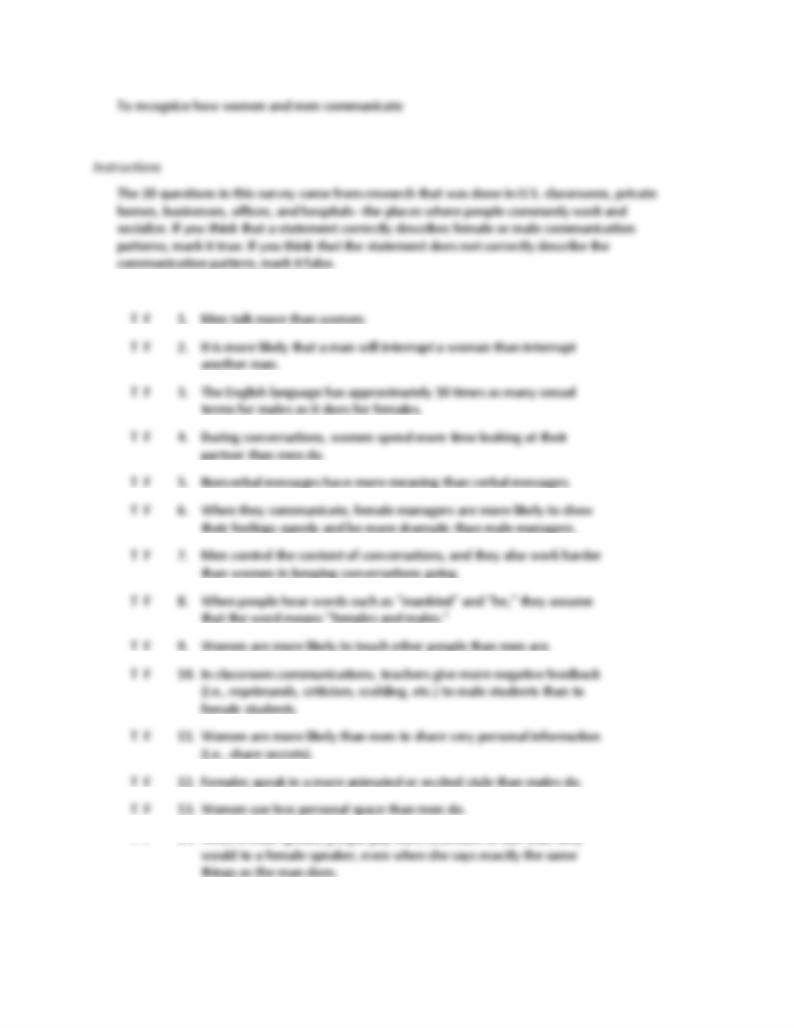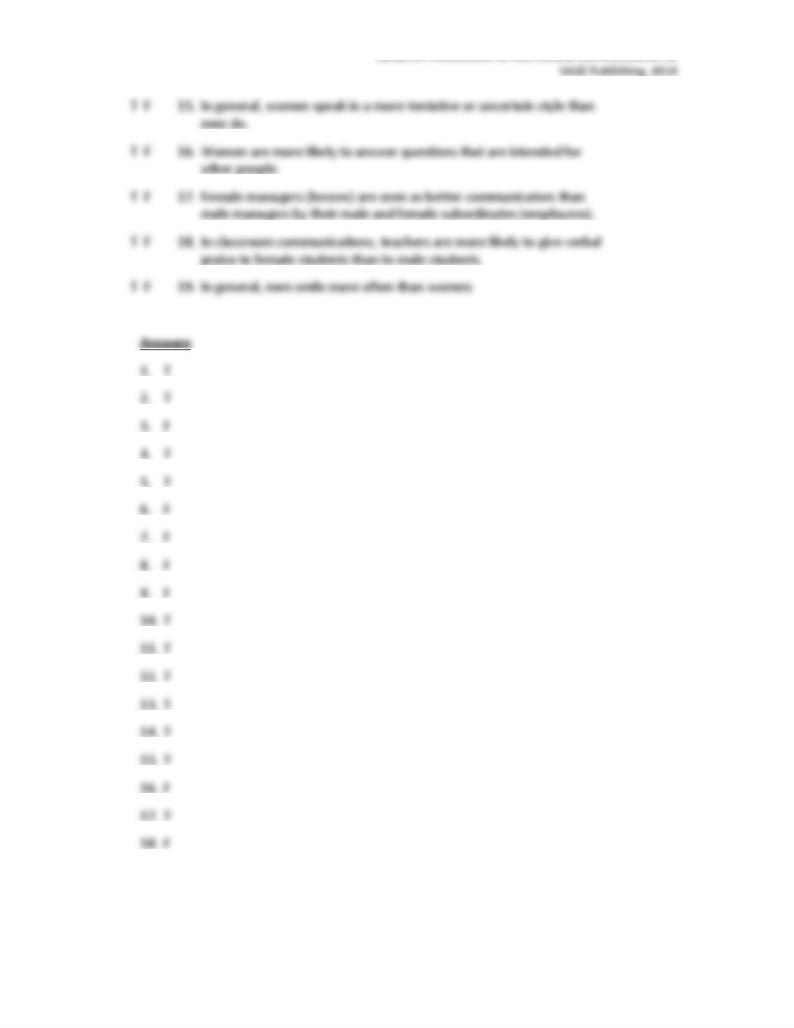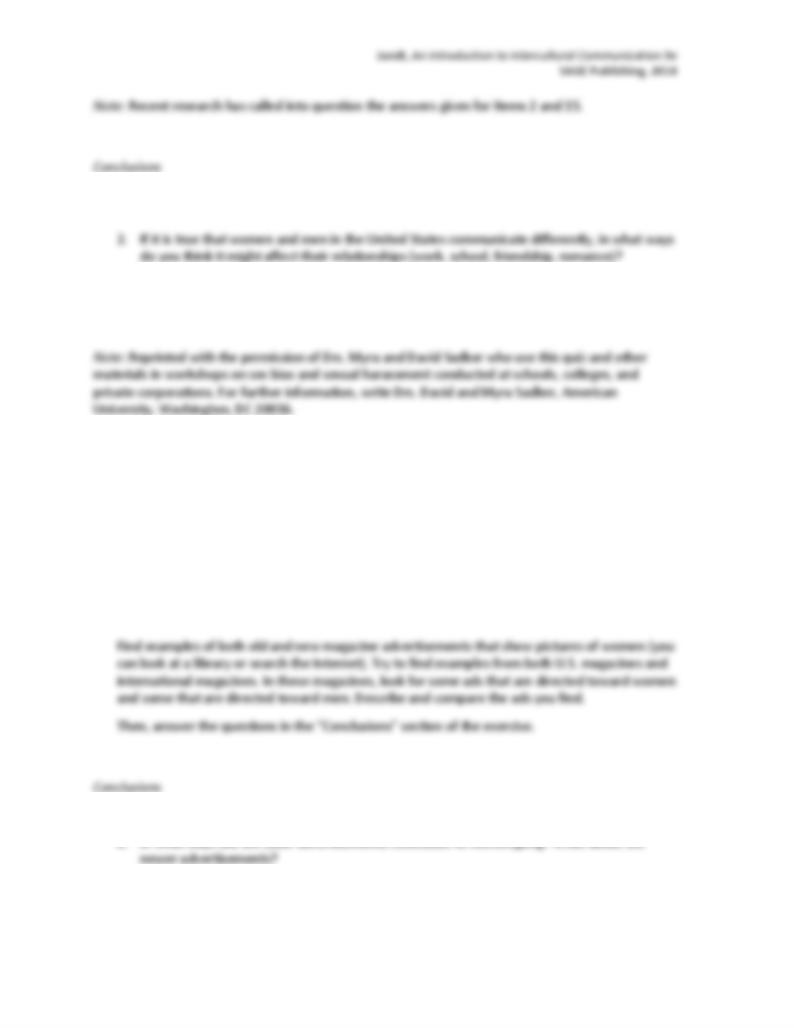
Jandt, An Introduction to Intercultural Communication 9e
SAGE Publishing, 2018
Chapter Exercises
Chapter 9: Culture and Gender
Exercise 1: Gender Talk in Different Social Settings
Purpose
To investigate what males and females of other cultures talk about in different social settings
1. What do males talk about in certain social settings?
2. What do females talk about in certain social settings?
1. How do your findings compare with those of your classmates?
2. Are there general similarities in what people from different cultural groups talk about in the
same social settings?
3. What influence does gender have on communication in certain social settings?
4. What influence does culture have on what is talked about in certain social settings?
Exercise 2: Gender Communications Quiz
Purpose

Jandt, An Introduction to Intercultural Communication 9e
SAGE Publishing, 2018
T F
14. When a male speaks, people pay more attention to him than they

Jandt, An Introduction to Intercultural Communication 9e
19. F

1. How do the statements in this survey compare with your own experience of female and
male communication patterns?
3. In which cultures might the answer to a question be different from what you believe to be
true for the United States?
Exercise 3: Women in Advertising
Purpose
To study how women are represented in advertising
Instructions
1. How are the images presented in the advertisements different?
2. In what ways did the older advertisements contribute to stereotyping? What about the
3. In what ways do the new advertisements reflect the culture of origin?

4. When you compared the ads for men and the ads for women, were there any “hidden
messages” that suggested how women (or men) should behave or be perceived? If so, what
5. Compare the international magazines with the U.S. magazines. Are there any differences in
the ways that women (or men) are shown? How are women shown in the magazines with a
Exercise 4: Women in Advertising
2. Research how that culture views gender identity. Do they consider sex and gender the
same? Do they conceptualize sex and/or gender as binary or as a continuum?
1. How can our understandings of gender identity differ?
2. Why do we view gender identity differently?
